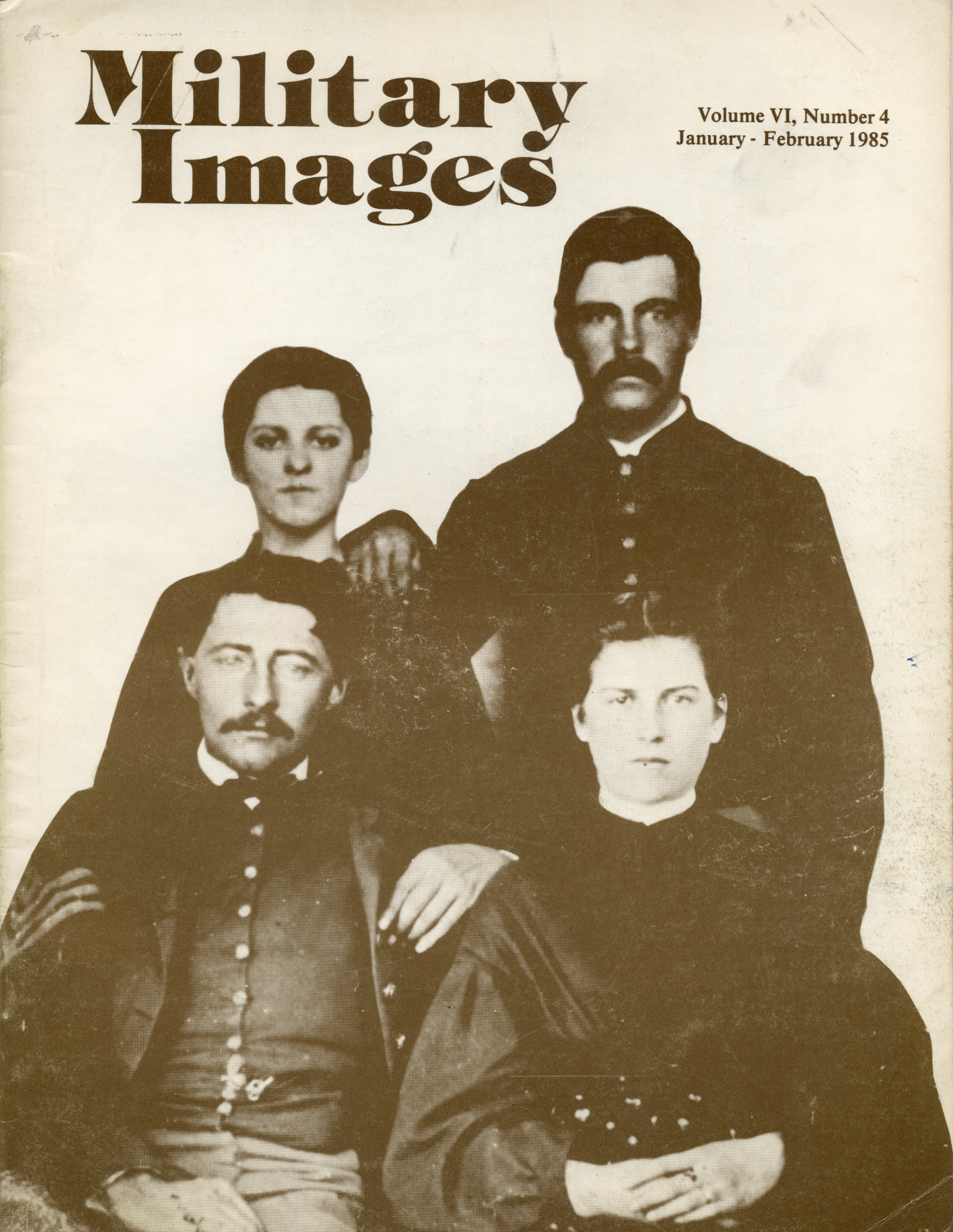The complete issue
Vol. VI, No. 4
(32 pages)
Print edition: Visit our store to check availability
Digital edition: Visit JSTOR.org to purchase
Subscribe to MI
Explore the MI Archives: Browse | Advanced search | Tutorial
Inside
Cover image
The cover image for this special issue features two couples, however not all of the individuals are identified. Sgt. Henry Stephens of the 45th Pennsylvania Volunteer Infantry stands on the right behind Ann M. Shenk.
Editor’s Desk (p. 1)
The editor warns the readership about the arrival of fake tintypes created by Mr. Walter Ward of West Alexandria, Ohio. While he does not market his reproductions as originals, many unknowing purchasers may buy them from other sellers as originals. The size of a carte de visite, the editor outlines some identifying features of these fakes.
Mail Call (p. 2)
Letters to the Editor include further information regarding articles on the 79th New York Highlanders, photographs of Zouaves, and “French Mary” Tepe. One reader had a question about markings on a weapon, which the Editor asked the readers to provide assistance.
The Girl I Left Behind Me (p. 3)
This short introductory article provides some insight into this special issue that commemorates the wives and sweethearts of soldiers in the 19th century. Women of this era were often relegated to roles played behind the scenes of history, with notable women usually taking on unusual roles. The images in this issue of Military Images feature the often unidentified women of this era with the military men in their lives.
Northern Images (pp. 4-17)
Ending with an unusual cabinet photograph probably from the 1880s that features a line of chorus girls dressed in Hussar “uniforms,” the 46 other images submitted by a variety of collectors included in this pictorial show Union couples and families from a wide range of Northern society. Some appear to be well-to-do, with the women wearing fashionable dresses, while others wear the home-spun of the less affluent. A few of the images are of fathers and daughters, mothers and sons, and family images with babies or children. Most of the individuals are not identified, leaving the viewers to wonder about the stories behind the faces.
Southern Images (pp. 19-24)
The seven Confederate images from the collection of Larry Willford are much like those of their Federal counterparts. Most are unidentified, and show a range of economic backgrounds. The first images if of a soldier with ladies who might be his sisters, while the last is of a soldier who is seen with a man who might be his civilian brother and their sister. As with the images in between, the stories are lost but the images remain to give us the real faces of the Civil War.
Post-Civil War Images (pp. 25-31)
This collection of ten images which range from the early 1870s up to the romantic photographs of a Spanish-American War soldier kissing his sweetheart provide more group images. Picnics in Arizona Territory and boating in Montana Territory show some of the relaxation that soldiers and their ladies could pursue in the latter part of the 19th century. There are a few couples images, and some that include children, like Lt. James S. Rogers and son reading a picture book together. Ending with a group photograph of the G.A.R. Ladies Drill Corps of Toledo, Ohio, this pictorial gives the sense of a more relaxed and less formal time.
Back Image
A ninth-plate ambrotype image of an unidentified soldier and his lady is presented.



































